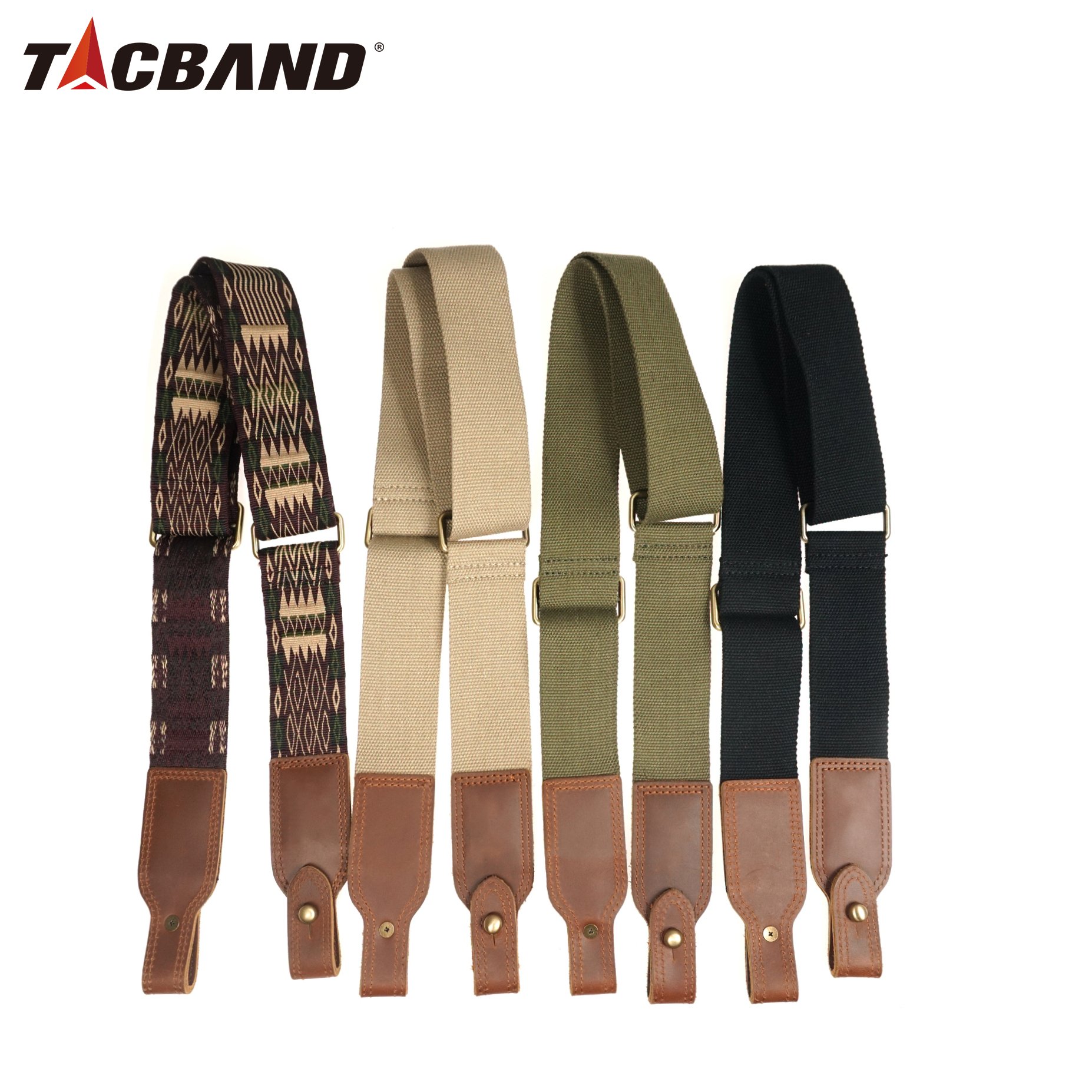Rifle slings are peculiar creatures that serve as a rifle holster, an aiming assist, a ceremonial object, and a piece of fancy accessory. They are also a matter of personal preference that can have a big impact on comfort, just like any clothing or wearing.
 slings
slings on Tacbands' page
Three sling mounting configurations are available: single-point, two-point, and three-point.
A chest strap, suspenders-like device, or "corset" that you wear is used in a single-point sling. The corset has a strap that connects it to the weapon for attachment. The strap only attaches to one place on the rifle, typically towards the back of the receiver. The only benefit is that switching from one shoulder to the other for firing is simple. There are several drawbacks. First of all, if you don't keep your hand on the weapon, it will be free to bounce around. It has the potential to bump into you in awkward places. It can pivot and point in the wrong place. Worst of all, even while functioning normally, it can still point at your feet or lower legs. Therefore, you need to keep a hand on it when using it.
The typical points of the stock or
handguards, the sides, or the top can all be used to install two-point slings. Two-point sling rifles can be carried in three different ways: tactically, hunter-style (muzzle up, one shoulder), and African-style (muzzle down, one shoulder) (diagonally across the body). The first two carry techniques are very secure since they direct the muzzle upward or downward. The tactical approach necessitates some awareness. Because the muzzle is pointing diagonally in this technique, you must be vigilant of anything or anyone standing about a foot to your left (for right-handed shooters). The classic slinging techniques are simple to use and remove, but using both hands for a task might be tricky.
The tactical approach requires a little more work to put on or take off, but it allows you to use both hands, maintain control over the muzzle direction, and avoid having the rifle slip off while you're moving or jam into the ground.
Three-point slings have a primary sling. The secondary sling is the next component, and it glides up and down the first sling while being secured at the butt plate end by another sling. Almost every carrying option is available with a three-point sling, although most of them result in the rifle hanging down about your knees or belt. Your range of motion is constrained, your options for use are limited, and you always worry that your rifle will try to choke you if you tighten the assembly so it stays up at chest level.
